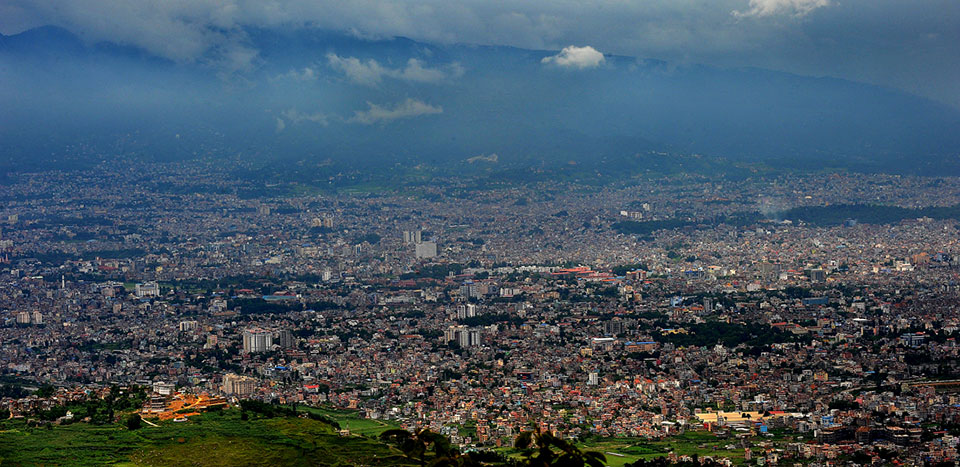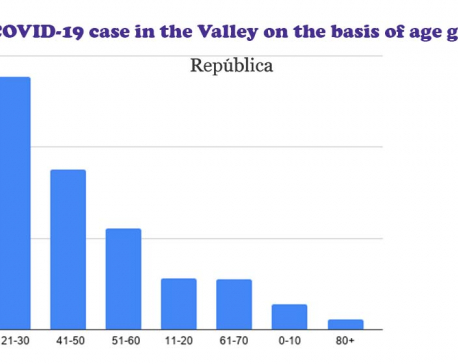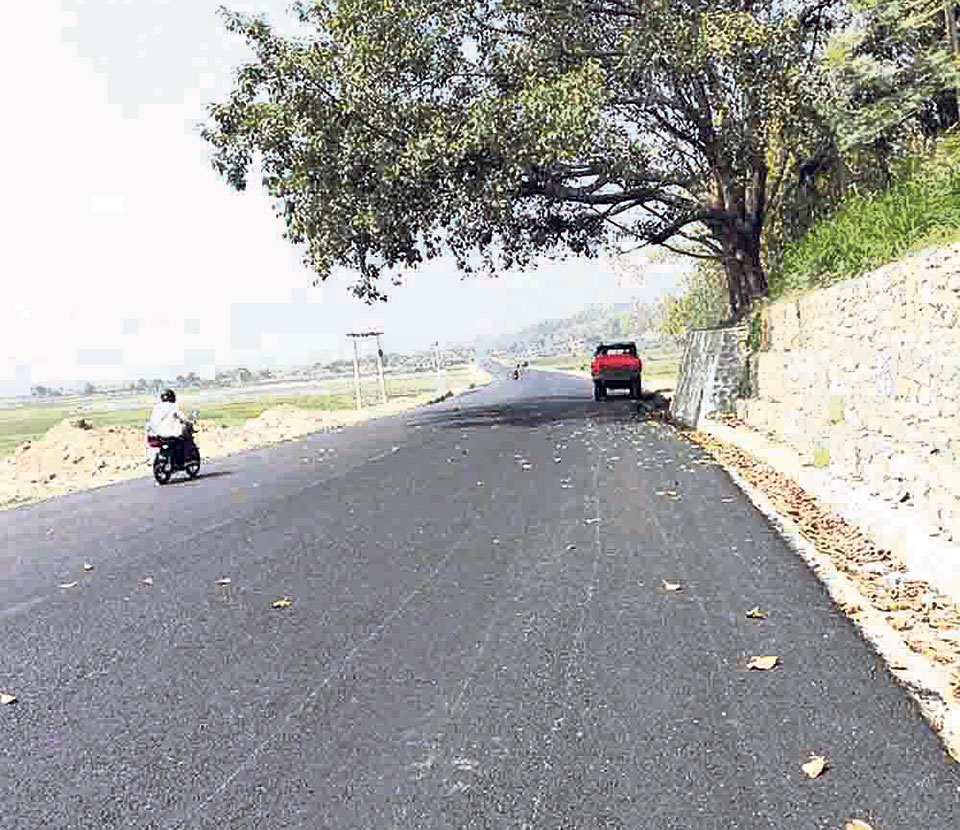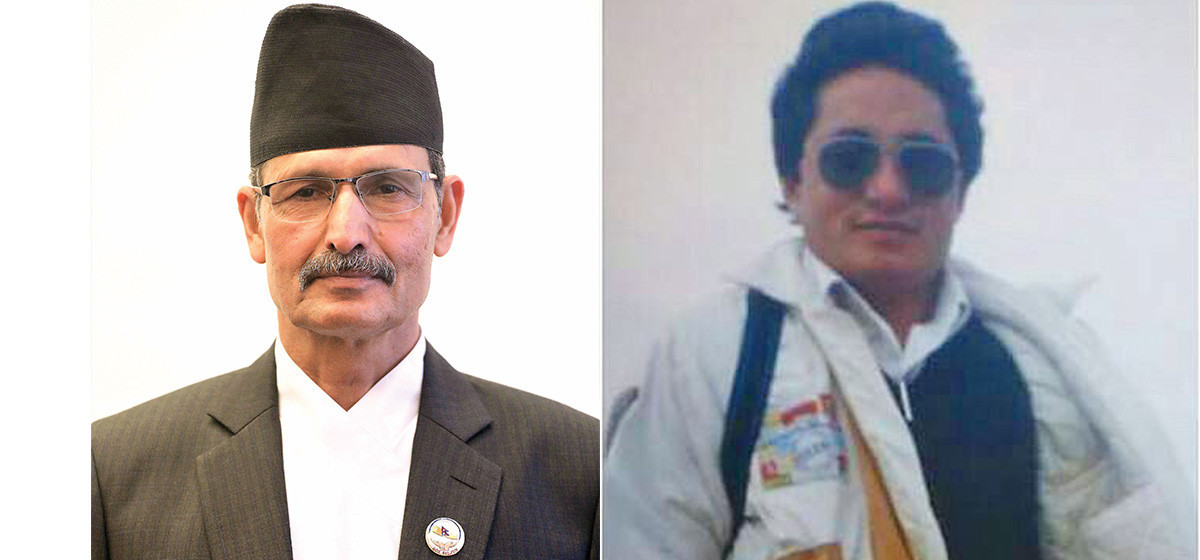
OR
Kathmandu Valley ‘could become' next hotspot for COVID-19 outbreak
Published On: August 3, 2020 07:50 AM NPT By: Ashim Neupane | @ashimnep

Over the last few days, new cases have been detected every day in the Kathmandu Valley
KATHMANDU, Aug 3: In the last few days, the number of COVID-19 cases has been increasing at an alarming rate in the Kathmandu Valley. More than 75 cases have been detected in the last few days among police personnel at the Nepal Police Headquarters. Likewise, some civil servants, bankers, among other professionals, have also tested positive of late in the Valley.
As the number of cases is increasing, public health experts fear that the Kathmandu Valley "could be" the next hotspot for the outbreak. With fewer tests and poor contact tracing, the Valley is only becoming vulnerable to the infection.
"After the government lifted the lockdown, the number of people entering the Kathmandu Valley has increased significantly. As there is no proper checking mechanism at the entry points, the risk in the Kathmandu Valley has increased in recent times," Dr Sher Bahadur Pun, a virologist, told Republica.
While the number of people entering the Valley in high numbers, Dr Pun says that the majority of entrants are from the corona-hit areas. "They [entrants] work at the community level. For instance, barbers, shopkeepers, drivers, among others are in constant contact with people at the community level. So, the risk of an outbreak has increased, given the low testing rate in comparison to the people entering the Kathmandu Valley," added Dr Pun.
Dr Pun further added that it can not still be concluded that COVID-19 has spread at the community level in the Valley. "Having said that, the government needs to increase the ambit of testing to know about the COVID-19 situation in the Kathmandu Valley."
In the last few days, at least 25 of those entering the Kathmandu Valley tested positive, when they were tested at the border points in Nagdhunga, Pharphing and Sanga.
After the government lifted the nationwide lockdown, at least 6,000 people have been entering the Kathmandu Valley every day, according to the data maintained by the Metropolitan Traffic Police Division.
In the last few days,a few cases have been reported every day in the Kathmandu Valley. Likewise, more than 75 COVID-19 cases have already been confirmed at the Nepal Police Headquarters in Naxal.
According to an official at the Epidemiology and Disease Control Division (EDCD), cities like Kathmandu "could" be the next hotspot for the outbreak. "The number of people entering the Kathmandu Valley from the affected regionS is alarmingly high. Although swab samples are collected at the entry points, people are allowed to enter the city before the test results. Contact tracing is also not effective. The ambit of testing has been reduced, and the apathy of the government in battling the pandemic is "surely" making Kathmandu the next hotspot," an official at the EDCD, told Republica, on condition of anonymity, as officials at the department are not allowed to speak against the government to media.
Giving the example of Parsa, the official said the district became a hotspot as people were allowed to enter the city without proper testing. "As the lockdown is lifted, people – even from the Indian side – are entering the country. I don’t know why the government is not serious about the pandemic when more than 50 people have already died of the disease," said the official, adding that there is no mechanism at the Kathmandu Valley entry points to test those entering the Valley, which makes it even more vulnerable to the outbreak.
Likewise, Sameer Mani Dixit, a public health expert, said people are not taking the pandemic seriously. "People are roaming around freely without masks. People are not following social distancing measures. This could lead to a big disaster," said Dixit.
Dixit further added that the government needs to increase the ambit of testing to find the situation of COVID-19 in the Valley. "The Valley is recording cases every day. However, the situation is yet not out of the government's control. The government needs to focus on contact tracing and increase the ambit of testing," said Dixit.
"The number of cases was already high in the capital. It has only increased in recent times as the government has increased the frequency of testing to some extent," said Dixit, adding that the government needs to conduct at least 25,000 tests a day to know if the transmission has spread at the community level.
"But if the government shows apathy toward increasing the number of tests, the situation will get out of control," he added.
You May Like This

Kathmandu Valley’s COVID-19 case tally up by 2,047 in a day
KATHMANDU, April 28: The Kathmandu Valley witnessed 2,047 new cases of COVID-19 on Wednesday. ... Read More...

Youths at a higher risk of COVID-19 in Kathmandu Valley
KATHMANDU, Oct 17: The Kathmandu Valley has witnessed the highest number of COVID-19 infected people aged between 21 to 40... Read More...

Hospitals with 50 or more beds told to suspend non-urgent checkups, surgeries
KATHMANDU, March 21: In a bid to prevent a possible outbreak of COVID-19, the government on Friday directed hospitals with... Read More...






Just In
- Hearing on 'murder' case against Agni Sapkota scheduled in SC after 17 years
- Ridi-Tamghas road to undergo a month-long closure from today
- Political party leaders express commitment to ensure consensus to promote investment in the country
- Ilam by-election update: UML's Nembang continues to lead in vote count
- Demystifying labeled Feminism
- Japanese Foreign Minister to visit Nepal next week
- Bajhang by-election update: NC candidate ahead by 249 votes
- Aid for war: On the United States Senate and aid package












Leave A Comment